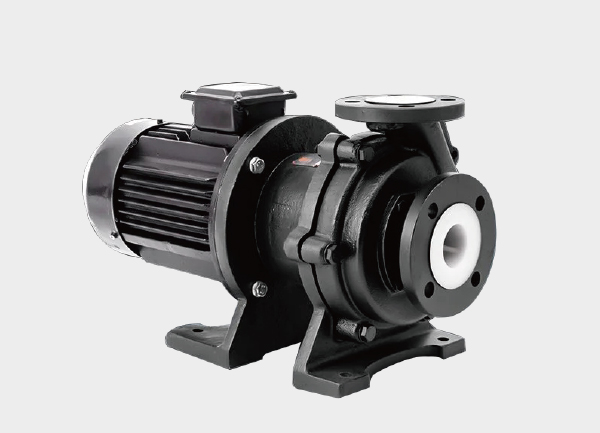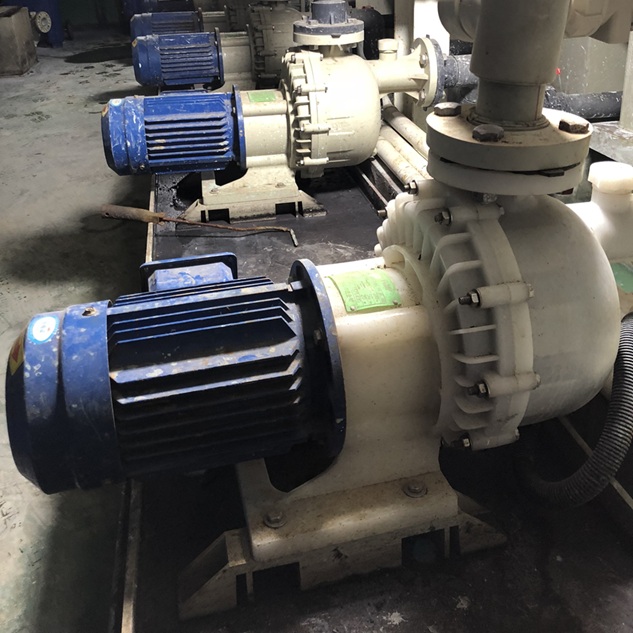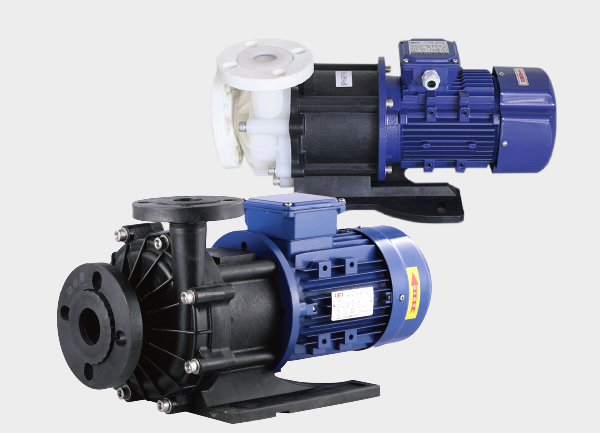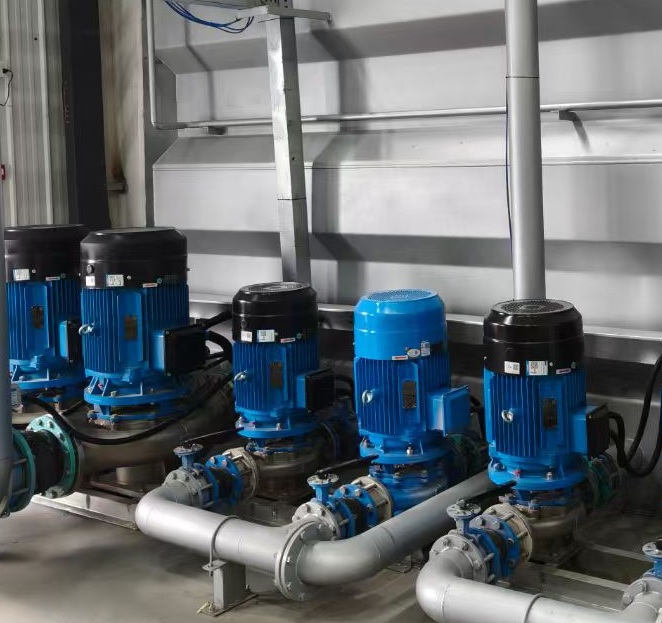1. Municipal & Civil Applications: Focus on Clean Water Transfer & Space Efficiency
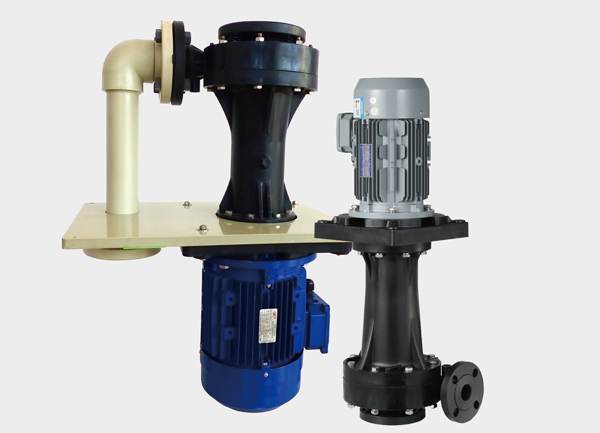
1.1 Urban Water Supply & Drainage Systems
- Key Uses:
- Pressurized transfer of water from water treatment plants’ “clear water tanks to urban water supply networks” (ensuring sufficient water pressure for high-rise buildings).
- Sewage lifting from “aeration tanks to sedimentation tanks” in wastewater treatment plants.
- Secondary water supply for old residential communities or commercial complexes (addressing low water pressure in high-rise structures).
- Why It Fits:
Vertical designs can be directly installed on top of water tanks without the need for separate pump foundations, saving space. Single-stage vertical centrifugal pumps offer high flow rates (up to 1,000 m³/h or more), meeting large-scale urban water transfer needs. They also operate at low noise levels (≤75 dB), making them suitable for areas near residential zones.
1.2 Civil Building Support Systems
- Key Uses:
- Circulation of cold/hot water in central air conditioning systems for office buildings or hotels (vertical inline centrifugal pumps align with pipeline axes, enabling direct integration into HVAC pipelines without adjusting pipe routes).
- Drainage of sump pits in basement of residential buildings (vertical submersible centrifugal pumps reach deep into pits to prevent water backflow into elevator shafts or electrical rooms).
- Water circulation and filtration for commercial swimming pools or hot springs (sanitary-grade vertical pumps feature polished, dead-angle-free inner walls to avoid water contamination).
- Why It Fits:
Vertical inline pumps require no extra installation space and can be embedded in building pipe shafts. Submersible designs eliminate mechanical seal leakage risks, reducing maintenance frequency (only 1–2 maintenance checks per year).
2. Industrial Applications: Focus on Medium Compatibility & Working Condition Adaptability
2.1 Chemical & Petrochemical Industry
- Key Uses:
- Transfer of corrosive media (e.g., hydrochloric acid, caustic soda solutions via fluoroplastic-lined vertical pumps; methanol/ethanol solvents via 316L stainless steel vertical pumps).
- Continuous transfer of raw materials from “storage tanks to reactors” in petrochemical plants (vertical submersible pumps immerse directly in storage tanks to reduce solvent evaporation loss).
- Lifting of chemical wastewater from “adjustment tanks to neutralization tanks” (acid- and alkali-resistant vertical pumps handle extreme pH conditions, 1–14).
- Why It Fits:
Specialized materials resist strong corrosion, while submersible designs eliminate shaft seal leakage—critical for reducing safety risks with flammable/explosive solvents.
2.2 Food & Pharmaceutical Industry
- Key Uses:
- Transfer of fruit juices, milk, or syrups in food factories (sanitary-grade vertical centrifugal pumps comply with GMP standards, using food-grade silicone seals to prevent media contamination).
- Aseptic transfer of liquid medicines from “formulation tanks to filling lines” in pharmaceutical plants (316L stainless steel pump bodies support high-temperature sterilization).
- Transfer of wort from “mash tuns to fermentation tanks” in breweries (inner walls polished to Ra ≤ 0.8 μm to avoid bacterial growth from residue).
- Why It Fits:
Pumps are easy to disassemble and clean (broken down into 3–5 core components), meeting the “per-batch cleaning and disinfection” requirements of food/pharmaceutical industries. Dead-angle-free structures prevent media deterioration from residue.
2.3 Power & Metallurgy Industry
- Key Uses:
- Boiler feedwater in thermal power plants (multi-stage vertical centrifugal pumps achieve heads over 1,000 meters, satisfying high-pressure boiler water supply demands).
- Circulating water transfer for cooling systems in steel plants (e.g., blast furnace cooling, rolling mill cooling—wear-resistant cast iron vertical pumps handle impurities like rust and dust in circulating water).
- Electrolyte transfer in non-ferrous metal smelting (titanium alloy vertical pumps resist strong oxidation of electrolytes).
- Why It Fits:
Multi-stage structures deliver high pressure, while wear-resistant materials extend service life (over 3–5 years with 20+ hours of daily operation). High-temperature-resistant designs (some models handle media over 150°C) suit harsh industrial environments.
2.4 Electronics & Semiconductor Industry
- Key Uses:
- Transfer of ultra-pure water in semiconductor cleanrooms (PVDF vertical pumps prevent metal ion leaching, meeting the 18.2 MΩ·cm purity standard for ultra-pure water).
- Circulation of deionized water or weak alkaline cleaning fluids in electronic component cleaning lines (PTFE seals avoid contamination of cleaning fluids).
- Why It Fits:
Non-metallic materials (PVDF, PTFE) eliminate ion contamination, and dead-angle-free pump bodies prevent microbial growth—critical for “zero-impurity” semiconductor chip production.
3. Water Treatment Applications: Focus on Efficient Sewage/Wastewater Lifting & Anti-Clogging/Corrosion
3.1 Municipal Sewage Treatment
- Key Uses:
- Sewage lifting from “grit chambers to adjustment tanks” in wastewater treatment plants (vertical sewage pumps with open impellers prevent clogging by fibers or plastic bags).
- Transfer of clear water from “secondary sedimentation tanks to disinfection tanks” (single-stage vertical pumps achieve ≥75% lifting efficiency).
- Return of supernatant from sludge thickening tanks (vertical submersible pumps immerse directly in supernatant layers, no need for suction pipes).
- Why It Fits:
Anti-clogging impellers reduce downtime for cleaning (only 1 cleaning per month, compared to weekly for traditional horizontal pumps). Submersible designs avoid cavitation, improving operational stability.
3.2 Industrial Wastewater Treatment
- Key Uses:
- Transfer of chromium/nickel-containing wastewater from “production lines to treatment tanks” in electroplating plants (titanium alloy vertical pumps resist heavy metal corrosion).
- White water recovery in paper mills (wear-resistant vertical pumps handle pulp fiber impurities).
- Lifting of dyeing wastewater from “dyeing vats to anaerobic tanks” in textile factories (anti-clogging vertical sewage pumps adapt to high-color, high-suspended-solid wastewater).
- Why It Fits:
Materials are customized for wastewater properties (e.g., titanium alloy for electroplating wastewater, high-chromium cast iron for paper mill wastewater), ensuring no significant corrosion or wear for over 3 years.
3.3 Pure Water & Reclaimed Water Reuse
- Key Uses:
- Transfer of raw water from “source tanks to filtration systems” in pure water plants (304 stainless steel vertical pumps prevent secondary raw water contamination).
- Transfer of treated reclaimed water from “reuse tanks to greening/toilet flushing pipelines” in residential communities (vertical inline pumps integrate directly into community water supply networks, no additional pressurization equipment needed).
- Why It Fits:
High-efficiency motors (≥90% efficiency) reduce energy consumption. Sanitary-grade materials meet reclaimed water quality standards (COD ≤ 50 mg/L).
4. Other Specialized Applications: Customized for Extreme Working Conditions
4.1 Marine & Offshore Engineering
- Key Uses:
- Ballast water transfer in ships (corrosion-resistant vertical pumps handle high-salinity seawater).
- Cooling water circulation in engine rooms (anti-vibration vertical pumps use double-supported shafts to reduce eccentric wear from ship sway).
- Why It Fits:
IP56 protection rating (waterproof and dustproof) suits high-humidity, high-salt marine environments. Lightweight designs (30% lighter than traditional horizontal pumps) save ship space.
4.2 Mining Industry
- Key Uses:
- Dewatering of mine pits (wear-resistant vertical centrifugal pumps with high-chromium alloy impellers resist sand and gravel abrasion).
- Lifting of mineral processing wastewater from “concentration tanks to sedimentation tanks” (anti-clogging vertical sewage pumps handle granular impurities in ore pulp).
- Why It Fits:
Wear-resistant materials extend impeller life (handling pulp with ≤10% solid content for over 2 years). High-flow designs (some models reach 500 m³/h) enable rapid dewatering, ensuring mining safety.
4.3 Heating Systems
- Key Uses:
- Transfer of high-temperature hot water from “heat sources to community heat exchange stations” in urban central heating (high-temperature-resistant vertical inline pumps handle 120°C hot water).
- Hydronic floor heating circulation in commercial complexes (low-noise vertical pumps operate at ≤60 dB, avoiding disruption to indoor environments).
- Why It Fits:
High-temperature seals (graphite-silicon carbide) prevent hot water leakage. Energy-efficient designs reduce operating costs during heating seasons (15–20% more energy-saving than traditional pumps).
Conclusion: Core Selection Logic for Vertical Centrifugal Pumps
- Medium Type: Choose cast iron/304 stainless steel for clean water; fluoroplastic/titanium alloy for corrosive media; 316L stainless steel + food-grade seals for sanitary applications.
- Installation Space: Opt for vertical inline centrifugal pumps (coaxial inlet/outlet) for narrow spaces like equipment rooms/pipe shafts; vertical submersible centrifugal pumps (no foundation needed) for installation above tanks/reservoirs.
- Head & Flow Requirements: Use single-stage vertical pumps for low-head, high-flow needs (e.g., municipal water transfer); multi-stage vertical pumps for high-head, low-flow needs (e.g., boiler feedwater).



